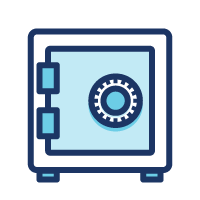3 Reasons to Refinance Your Mortgage

You’ve likely heard talk about interest rates being at historic lows. You’re wondering if refinancing your current mortgage is the right move for you?
Believe it or not, rates are at historic lows but that doesn’t mean you should automatically go out and refinance your mortgage.
The first thing you should ask yourself is why is it a good reason to refinance my mortgage?
Reason #1: Lower Your Monthly Payment
The most common reason current homeowners are refinancing is to lower their monthly payments and save money.
Most of the time when homeowners refinance from a higher interest rate to a lower interest rate, their monthly payment goes down and they save thousands of dollars in interest over the life of the new loan.
Refinance Example: Lower Monthly Payment
Let’s assume you created a mortgage loan five years prior for $300,000 on a 30-year fixed-rate mortgage at 4.75%.
Your monthly mortgage payment is $1,565.
If you stay in the home for the entire 30 years and never refinance your mortgage, you will have paid a total of $563,400 for the $300,000 mortgage, with the interest making up a whopping $263,400.
However, after 5 years in your current mortgage, you decide to refinance from your current rate of 4.75% to a new rate of 3.5%.
Don’t forget, you have already made five years or 60 monthly payments of $1,565. This adds up to a total of $93,900.
The current balance of your original $300,000 mortgage is now paid down to $274,494 and with a new 30-year mortgage at 3.5%, the new monthly payment drops by $332 per month to $1,233.
By lowering your interest rate, you will save a significant amount of money in interest.
Therefore, the total savings of moving from a 4.75% to a 3.5% mortgage is a decrease in your monthly mortgage payment by $332.
| Current Loan | New Loan | Total Savings | |
|---|---|---|---|
| Loan Amount | $300,000 | $274,494 | — |
| Rate | 4.75% | 3.5% | 1.25% |
| Monthly Payment | $1,565 | $1,233 | $332 |
**Savings does not reflect the cost to refinance the loan.
Reason #2: Pay Off Your Mortgage Faster
What would it feel like if you no longer had a mortgage payment every month?
Many homeowners dream of becoming mortgage-free and are looking for ways to get rid of their monthly mortgage payment as quickly as possible.
By refinancing into a lower rate and a lower term, homeowners can save thousands of dollars and years of monthly mortgage payments.
Refinance Example: Lower Rate and Lower Term
Going back to the earlier example, you created a $300,000 mortgage five years earlier at a rate of 4.75%.
With 25 years left on your current mortgage, you decide to go with a new 15-year loan at 3.5% with a current mortgage balance of $274,494.
Your new monthly payment increases by $397 per month to $1,962.
Pro Tip: Whenever a payment increases, always make sure it fits within your monthly budget.
By lowering your interest rate and moving from a 30-year term to a 15-year term, you will save a significant amount of money in interest.
In the end, you will pay off the mortgage 10 years earlier.
Reason #3: Eliminate Mortgage Insurance
Whether you are paying private mortgage insurance (PMI) with a conventional loan or a mortgage insurance premium (MIP) with an FHA loan, many homeowners are refinancing their current loans to get rid of the mortgage insurance premiums.
The good news is with home values up nearly 20% across the country from 2020 to 2021, many homeowners have enough equity in their homes to completely get rid of either MIP or PMI.
FHA Loans and MIP
If you have an FHA loan you created in 2013 or later and you put less than 10% down, you are currently paying a mortgage insurance premium (MIP) for the life of the loan.
Therefore, the only way to get rid of a mortgage insurance premium is to refinance your FHA loan into a new conventional mortgage.
On the other hand, if you put 10% or more down on your FHA loan, then you can either wait the full 11 years for the MIP to drop off, or you could refinance the loan to get rid of it sooner.
Conventional Loans and PMI
If you created a conventional loan with less than 20% down, you are most likely paying private mortgage insurance (PMI).
The good news is PMI will drop off when you reach 80% loan-to-value (LTV). However, that 80% LTV is only based on you making enough payments to lower the mortgage balance to 80% LTV and does not take into consideration the value of your home increasing.
Therefore, the only way to get rid of your PMI is to pay down the mortgage balance sooner or refinance into a new loan using the increased value in the home as the equity (if 20% or more equity) to get rid of PMI.
Note: If you have a new loan that you created within the past two years, you may have to wait on refinancing to get rid of your PMI. Some lenders have a seasoning requirement which may not allow you to refinance into a newer loan within a certain timeframe. Review your mortgage closing documentation if you believe that this may be the case.
Closing Costs and the Break-Even Point
Up to this point, we have only discussed the savings when it comes to lowering the interest rate and decreasing the term of the loan. However, we still need to factor in the cost of refinancing the loan to determine if a refinance still makes sense.
A good rule of thumb is to factor in 2% - 5% of the new loan amount when determining the cost of your refinance.
The Break-Even Point When Lowering Your Interest Rate
The most accurate way to determine the break-even point is to calculate the monthly interest savings as compared to the cost to refinance the loan.
Then, simply look at how many months it takes for the savings in interest to exceed the amount paid in closing costs.
You can do this by looking at an amortization schedule — a list of monthly payments broken down into principal and interest for the life of the loan.
Closing Costs and Lowering Your Term
If you can afford to trade a higher monthly payment for a shorter loan term, the savings will heavily outweigh the cost to refinance into the new loan.
Using an amortization schedule showing the monthly payments of both principal and interest, you determine it will take approximately 27 months to break-even on the cost to refinance the loan as compared to the savings in interest.
Therefore, you must stay in the home for at least two years and three months for the refinance to be worth it.
Is Refinancing Worth It?
If you are planning to stay in your home for a while and you currently have a higher interest rate than what is currently being offered, then refinancing is definitely worth it.
As you can see from the above examples, refinancing is a great way to save money, get rid of mortgage insurance, or even knock years off your loan term.
Beyond those top three reasons mentioned above, there are other reasons you should consider refinancing as well. Maybe you’re looking to convert the equity in your home to cash through a cash-out refi. Or, maybe you have an adjustable rate mortgage (ARM) and you would like to refinance into a fixed-rate loan.
Whatever your reason for refinancing, be sure to seek out a mortgage professional to walk you through the process and show you exactly what your options are so you can make the best financial decision for your personal finances.
Chris “Peach” Petrie is the founder of Money Peach. Money Peach partnered with OneAZ to provide free financial education to members across the state. To learn more about OneAZ’s partnership with Money Peach, click here.
APR = Annual Percentage Rate














